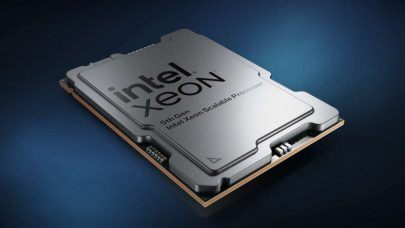
Argentina’s Clementina XXI: Latin America’s Fastest Supercomputer
April 1, 2024
In a joint program between Argentina's Undersecretary of Science and Technology and Minister of Defense, Argentina is home to the most powerful supercomputer in Read more…

Intel’s Strategy to Free Server Capacity by Pushing AI Inference to PCs
January 18, 2024
AI is here to stay and is becoming a larger part of the workload processed on servers and PCs. That's why Nvidia is seeing success as a chipmaker, and there is excitement around large language models such as Meta's open-source Llama. An eager audience wants to get a handle on such models... Read more…

Intel Won’t Have a Xeon Max Chip with New Emerald Rapids CPU
December 14, 2023
As expected, Intel officially announced its 5th generation Xeon server chips codenamed Emerald Rapids at an event in New York City, where the focus was really o Read more…

The Divergent Evolution of the Next Generation Xeon Processor
September 7, 2023
At the recent Hot Chips meeting, Intel revealed technical specifications and features for the next-generation Xeon architecture arriving in 2024. While the next Read more…

Intel Puts a Happy Face on Its Worst Quarterly Loss Ever
April 27, 2023
Intel posted its worst quarterly loss in history on Thursday, but the chipmaker took a bold move to put a positive spin on the grim news. “We delivered solid first-quarter results, representing steady progress with our transformation,” said Pat Gelsinger, Intel's CEO, in a press release. Read more…

Intel Touts Sustainability Benefits of Sapphire Rapids Processors
January 11, 2023
The slowing of Moore’s law, rising energy costs and increasing climate regulations have led to ever-larger and ever-more-consequential energy footprints for d Read more…

Intel’s Rental Service on Chips Could Face Buyer Backlash
January 11, 2023
Intel is bringing subscription and rental services to semiconductors as it explores new business models, but it remains to be seen if buyers warm up to the idea of paying extra to unlock features on a chip. Intel is bringing an "on-demand" feature to its new Xeon CPUs codenamed Sapphire Rapids, which the company launched on Tuesday after long delays. The on-demand feature involves paying a fee to activate... Read more…

Intel Launches ‘Max Series’ Rebrand for Ponte Vecchio, Sapphire Rapids HBM
November 9, 2022
Ahead of SC22 (next week!), Intel today announced a major rebrand of its forthcoming datacenter-focused products. In short: the fourth-generation Xeon CPU with Read more…

- Click Here for More Headlines

Whitepaper
Transforming Industrial and Automotive Manufacturing
In this era, expansion in digital infrastructure capacity is inevitable. Parallel to this, climate change consciousness is also rising, making sustainability a mandatory part of the organization’s functioning. As computing workloads such as AI and HPC continue to surge, so does the energy consumption, posing environmental woes. IT departments within organizations have a crucial role in combating this challenge. They can significantly drive sustainable practices by influencing newer technologies and process adoption that aid in mitigating the effects of climate change.
While buying more sustainable IT solutions is an option, partnering with IT solutions providers, such and Lenovo and Intel, who are committed to sustainability and aiding customers in executing sustainability strategies is likely to be more impactful.
Learn how Lenovo and Intel, through their partnership, are strongly positioned to address this need with their innovations driving energy efficiency and environmental stewardship.
Download Now
Sponsored by Lenovo
Whitepaper
How Direct Liquid Cooling Improves Data Center Energy Efficiency
Data centers are experiencing increasing power consumption, space constraints and cooling demands due to the unprecedented computing power required by today’s chips and servers. HVAC cooling systems consume approximately 40% of a data center’s electricity. These systems traditionally use air conditioning, air handling and fans to cool the data center facility and IT equipment, ultimately resulting in high energy consumption and high carbon emissions. Data centers are moving to direct liquid cooled (DLC) systems to improve cooling efficiency thus lowering their PUE, operating expenses (OPEX) and carbon footprint.
This paper describes how CoolIT Systems (CoolIT) meets the need for improved energy efficiency in data centers and includes case studies that show how CoolIT’s DLC solutions improve energy efficiency, increase rack density, lower OPEX, and enable sustainability programs. CoolIT is the global market and innovation leader in scalable DLC solutions for the world’s most demanding computing environments. CoolIT’s end-to-end solutions meet the rising demand in cooling and the rising demand for energy efficiency.
Download Now
Sponsored by CoolIT
Advanced Scale Career Development & Workforce Enhancement Center
Featured Advanced Scale Jobs:
HPCwire Resource Library
HPCwire Product Showcase
© 2024 HPCwire. All Rights Reserved. A Tabor Communications Publication
HPCwire is a registered trademark of Tabor Communications, Inc. Use of this site is governed by our Terms of Use and Privacy Policy.
Reproduction in whole or in part in any form or medium without express written permission of Tabor Communications, Inc. is prohibited.
























